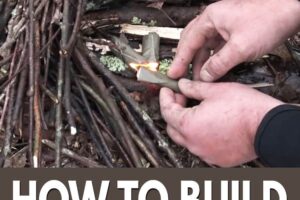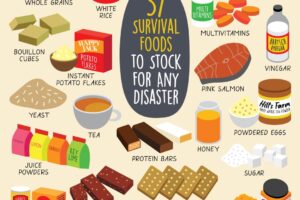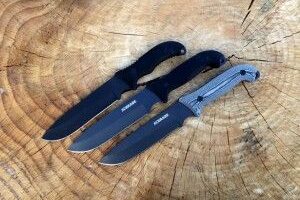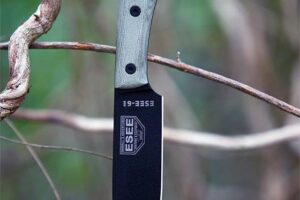
Price: [price_with_discount]
(as of [price_update_date] – Details)

[ad_1]
Sergei Boutenko’s groundbreaking field guide to the art and science of foraging and preparing wild edible plants—includes 300+ photos of 60 plants
**An Amazon Editors’ Pick — Best Cookbooks, Food & Wine**
In Wild Edibles, Sergei Boutenko’s bestselling work on the art and science of live-food wildcrafting, readers will learn how to safely identify 60 delicious trailside weeds, herbs, fruits, and greens growing all around us. It also outlines basic rules for safe wild-food foraging and discusses poisonous plants, plant identification protocols, gathering etiquette, and conservation strategies.
But the journey doesn’t end there.
Rooted in Boutenko’s robust foraging experience, botanary science, and fresh dietary perspectives, this practical companion gives hikers, backpackers, raw foodists, gardeners, chefs, foodies, DIYers, survivalists, and off-the-grid enthusiasts the necessary tools to transform their simple harvests into safe, delicious, and nutrient-rich recipes. Special features include:
60 edible plant descriptions, most of them found worldwide300+ color photos that make plant identification easy and safe 67 tasty, high-nutrient plant-based recipes, including green smoothies, salads and salad dressings, spreads and crackers, main courses, juices, and sweets
For the wildly adventurous and playfully rebellious, Wild Edibles will expand your food options, providing readers with the inspiration and essential know-how to live more healthy (yet thrifty), more satisfying (yet sustainable) lives.
From the Publisher
A Field Guide to Edible Plants
The most common definition of a weed is any plant that grows where it is not wanted. By this description, even the most magnificent flower can be considered a nuisance if it sprouts in the wrong place. The plants I present here are weeds and wild edibles with which I have had extensive practice. My compilation is by no means absolute. As you progress as a forager, you will learn more about plants and discover many edibles that are not in my book. For the time being, however, the plants I discuss represent a starting point for those interested in living a healthier, wilder life.






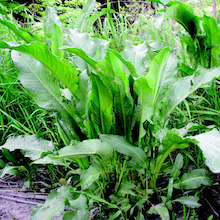

Aloe Vera—Aloe barbadensis
Family Name: Aloaceae
Edible: Leaves.
Flavor: Young leaves are mild and refreshing. Mature aloe is very bitter.
Description: Aloe has green, succulent leaves that are filled with clear gel. Leaves grow in a compound pattern and have hardy spikes at every tip.
Uses: Eat young leaves (and the gel) raw or add to smoothies. Use aloe gel to treat burns and other skin ailments.
Nutritional Highlight: Aloe vera is said to have antispasmodic properties, making it beneficial for people with asthma, colds, and congestion. Aloe gel also helps tighten skin and reverse wrinkles.
Helpful Tips: Aloe is very nutritious and beneficial to consume, but it can be extremely bitter and unpalatable. I like to add a small piece of aloe leaf to my smoothies to boost their nutrition. Remember, the smaller the leaf, the less bitter it will be.
ID Trick: Desert plant with long, pointy leaves full of gel.
Blackberry—Rubus allegheniensis
Family Name: Rosaceae
Caution: Please note that chemical changes occur in blackberry leaves during the wilting process that can cause stomach upset. Eating fresh, tender leaves or leaves that have been fully dried will prevent mishap.
Edible: Leaves, stems, berries, and flowers.
Flavor: Berries are sweet if harvested ripe. Greens are mild and slightly astringent.
Description: Blackberry bushes range in size from a single low-growing cane to bountiful mounds nine feet tall. Berries are pebbly and turn dark purple/black when ripe.
Uses: Blackberries are edible and very delicious, with edible flowers and greens.
Nutritional Highlight: Blackberries are rich in vitamins A and C. Perhaps the most promising benefit of consuming blackberries is their substantial quantity of phenolic acids, which are antioxidants known to prevent cancer.
Helpful Tips: Blackberries are members of the rose family.
ID Trick: Black or dark purple berries made up of many tiny drupelets containing juice and seeds.
Chickweed—Stellaria media
Family Name: Caryophyllaceae
Edible: Leaves, stems, and flowers.
Flavor: Leaves and flowers are slightly sweet and juicy. Stems taste earthy.
Description: Chickweed grows in a dense mat on the ground. Leaves are oval and grow in an opposite pattern along long, slender stalks. Flowers have five petals that are deeply cleft, so it looks like there are actually ten.
Uses: Chickweed is a mild and delicious plant that can be eaten raw. Try adding chickweed to your next salad, sandwich, or wrap.
Nutritional Highlight: Rich in vitamins. It has been used to treat bladder, kidney, and urinary tract difficulties. It soothes irritated tissue, which makes it beneficial for cosmetic or topical applications.
Helpful Tips: Chickweed can be easily harvested with a pair of scissors. Simply grab a handful in one hand and use your other to cut it near the base of the plant.
ID Trick: Tiny white flowers with five deeply cleft petals that look like ten petals. Alternating Mohawk hairline on the stem.
Dock—Rumex spp.
Family Name: Polygonaceae
Edible: Leaves, stems, seeds, and flowers.
Flavor: Slightly bitter and a little sour.
Description: Elongated green leaves that curl at the edges. Showy clusters of seeds can be observed growing near the top of the plant. Flowers are green and inconspicuous.
Uses: Leaves can be eaten raw. You can also steam, sauté, boil, fry, and marinate them. Seeds can be used in crackers and breads.
Nutritional Highlight: Dock is one of the best sources of iron, which is great for treating constipation, blood disorders, skin disease, rheumatism, and indigestion. It is also great for cleansing the system of heavy metals. Seeds contain omega-3 fatty acids.
Helpful Tips: Dock is very healing for the skin.
ID Trick: Dock leaves ruffle at the edges. This makes them easy to spot. Seeds turn brown and rattle in the wind. In late summer, if you listen closely, you can sometimes hear dock before you see it.
Publisher : North Atlantic Books; 1st edition (July 16, 2013)
Language : English
Paperback : 296 pages
ISBN-10 : 1583946020
ISBN-13 : 978-1583946022
Item Weight : 1.21 pounds
Dimensions : 6 x 0.63 x 9 inches
[ad_2]



